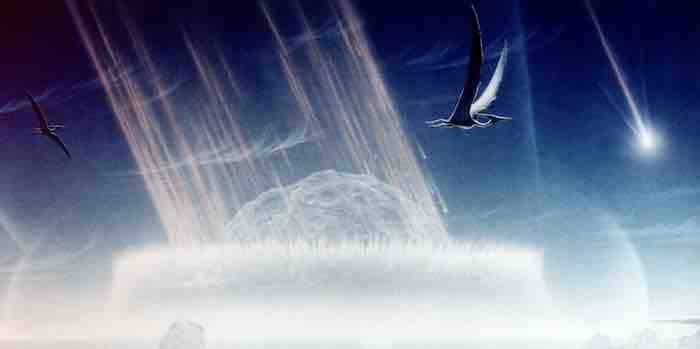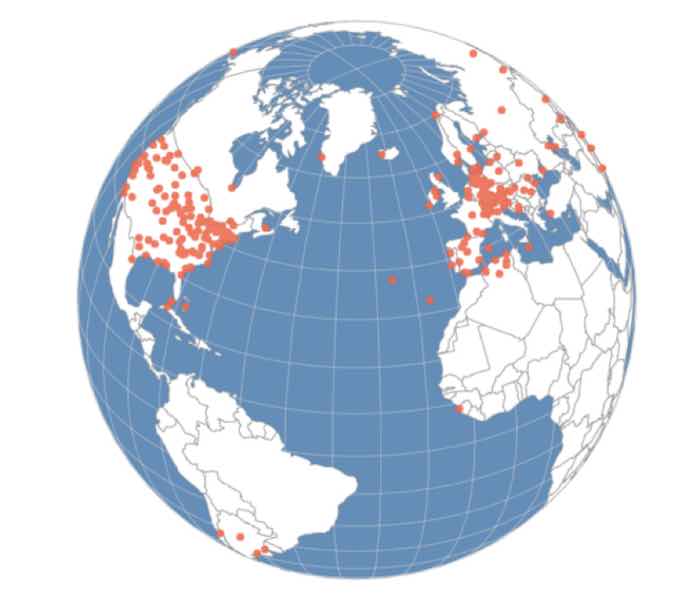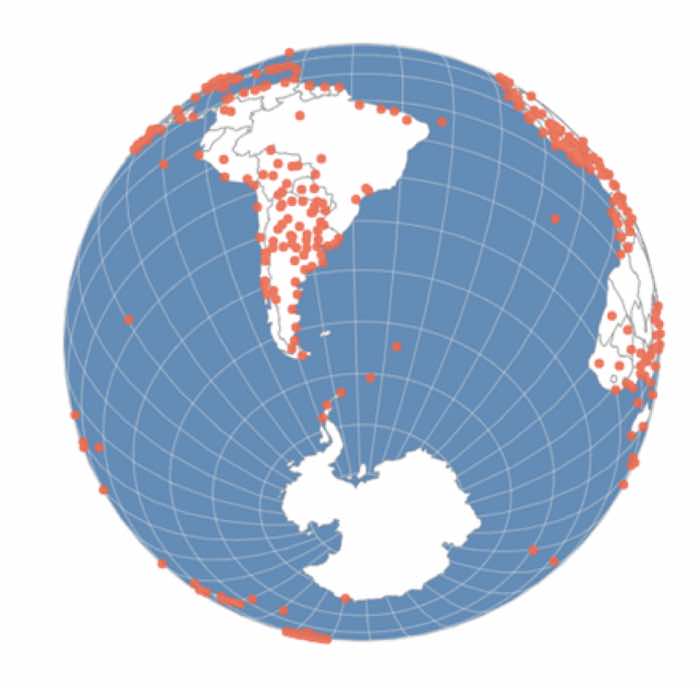By Tom Harris ——Bio and Archives--November 19, 2023
Global Warming-Energy-Environment | CFP Comments | Reader Friendly | Subscribe | Email Us

For two weeks starting on November 30th, we will be inundated with the avalanche of climate change alarmism that always accompanies the annual United Nations Climate Change Conferences. This year the event, officially called the 28th Conference of the Parties (COP28) to the United Nations Framework Convention on Climate Change (UNFCCC), will be held in Dubai in the United Arab Emirates.
Leaders from across the world will tell us that we are in the midst of a climate emergency that threatens to destroy our civilization. We must therefore restructure our entire energy infrastructure to achieve net-zero emissions to “save the planet.”
Yet, the 1,828 experts who endorsed the World Climate Declaration say the opposite. They explained:
To decide which position makes the most sense, and what, if any, greenhouse gas reduction policies are needed, we must determine some way to properly assess the risk of human-induced climate change. It is insufficient to simply say that the consequences of catastrophic climate change would be so dreadful that any and all actions to prevent it are justified. We must also account for the probability of such events occurring in the foreseeable future.
We conduct risk assessment all the time, of course. When we go outside, we risk being hit by a falling tree, a truck or lightning, events that would obviously be personally catastrophic if they actually happened. But we conclude that, if normal safety precautions are taken, the chances of these things occurring is so low that we have no hesitation about leaving our house.
The same approach should apply to public policy formulation. If risk assessment only entailed responding to possible outcomes, then our governments would be building an asteroid defense system. After all, a large asteroid impact could destroy life on Earth and perhaps even shatter the planet itself, a far worse outcome than even the most extreme climate change forecasts.
But governments conclude that the probability of a such an impact in the foreseeable future is too small to justify spending trillions of dollars on the issue. So, while we should continue to watch the skies for possible threats from space, we dedicate the majority of our money and attention to dealing with known, immediate problems such as crime, terrorism and local pollution.
Planning for the possibility of catastrophic human-caused climate change is similar, or at least it should be. Here’s why.
The amount of climate change that is due to human activity (i.e., that which is “anthropogenic”) must have been very small to date. The United Nations Intergovernmental Panel on Climate Change (IPCC) estimates that surface temperature, averaged over all land and ocean surfaces, rose only about 1.2 degree Celsius between 1880 and today.
And a significant portion of that change would have been part of a natural climate cycle coming out of the Little Ice Age that saw widespread famine and disease. So, our contribution to the change that has occurred in those 143 years is something less 1.2 degrees, anything but catastrophic.
Changes in sea level rise and extreme weather have also been unexceptional in the last century. Therefore, like temperature rise, the contribution to these changes from human activity must have been very small.
Anthropogenic climate change worries are based solely on possible future events, events that are, by definition, not yet known. Granted, those changes could be a problem, they may not be. Professors Chris Essex (applied mathematician, University of Western Ontario) and Ross McKitrick (economist, University of Guelph) write in their award-winning book Taken by Storm:
Even the IPCC said in its Third Assessment Report:
Support Canada Free Press

So how does one develop sensible climate change policy when the likelihood of dangerous outcomes is unknown, and perhaps even unknowable?
In his 2004 PhD Thesis, “Astronomical Odds - A Policy Framework for the Cosmic Impact Hazard,” Geoffrey S. Sommer laid out a rational hierarchy of responses to the possibility of a catastrophic asteroid or comet impact with our planet, something he considered “an extreme example of a low-probability, high-consequence policy problem.” He identified three levels:
Sommer’s approach is similar to that often used in military operations: surveillance is used to detect a threat; the detected threat is then tracked and, to the extent possible, characterized; then mitigation actions are, if deemed necessary, taken to neutralize the threat. Surveillance and tracking provide support for the mitigation function.
Sommer’s hierarchy of responses should also be used in the formulation of public policy concerning human-caused climate change. The three levels would be applied as follows:
Level 1: Surveillance and tracking – expand and greatly improve weather and climate sensing systems, on the ground and from space. Continue to determine past climate change through geologic studies of “proxies” of climate in Earth’s history.
Level 2: Characterization – Research to determine if current changes are dangerous, and, if so, if they are caused significantly by human activities. Continue to try to better understand the climate system so that meaningful climate models may someday be created to aid in preparation for future change (such models do not yet exist).
Level 3: IF possible, practical, AND DEMONSTRATED IN LEVELS 1 AND 2 TO BE NECESSARY, mitigation (attempts to slow climate change).
The collection and interpretation of data required to fulfil levels 1 and 2, such measurements as temperature and precipitation, has only just begun. There are relatively few weather stations of adequate length or reliability on which to base model forecasts of future climate, so the current predictions of climate alarmists have no validity in the real world.
The late Hubert Lamb, founder of the Climatic Research Unit at the University of East Anglia in the United Kingdom, defined the basic problem in his autobiography, “Through all the Changing Scenes of Life: A Meteorologists Tale”:
NASA’s Goddard Institute for Space Studies (GISS) imply that today’s ground-based weather station coverage is adequate to determine long term temperature trends. But, using data from their own website, we find that there are very few weather stations (red dots on the following figures) that cover the period from 1880 to today. Note how, with only a few exceptions, it is mostly only in the United States and western Europe that we have such long duration weather stations.

Starting about 70 years ago, much of the Northern hemisphere became better covered. But vast areas of the southern hemisphere have no weather stations with continuous records over this period. The image below shows weather stations with a continuous record over the 70-year period from 1953 to today.


GISS, Apparently unknowingly, NASA GISS illustrate the problem in their own graphs as follows.

As can be seen in the first graph above, relatively few weather stations have records of 100 years or more and almost all of them are in heavily populated areas of northeastern U.S. or Western Europe and are subject to the urban heat island effect. The second graph above shows that the number of stations has actually dropped in recent years.
The third graph above looks promising at first glance. Over 80% of the area of the Earth is covered in the northern hemisphere and only slightly less in the south. But GISS consider a region adequately covered if there is a weather reporting station within 1200 km. This would mean that, if a weather station recorded data in Los Angeles, there would be no need for other stations within a circle of 1200 km radius (see figure below). El Paso, Texas and even parts of Wyoming would be covered by LA’s station. That is absurd, of course. Yet these weather station records are the standard for IPCC reports.

Figure 3: NASA GISS considers a region ‘covered’ if there is a weather reporting station within 1200 km.
If, someday, scientists had the data to properly fulfil the requirements of level 1, surveillance and tracking, we would still have to complete level 2, characterization, and demonstrate that the data we had collected revealed dangerous man-made climate change, before moving on to level 3, mitigation. While we are a very long way from being able to properly characterize the threat of man-made climate change, there is essentially nothing in the data collected so far that indicates a problem. The climate change we have witnessed in the past hundred years differs little from what one would expect to see due to natural warming coming out of the Little Ice Age that ended in the late 1800s.
The public must insist that a rational approach to climate change be taken, one which takes into account both the possible outcomes as well as the probability of those outcomes actually coming about. Sommer’s three-step hierarchal strategy to handling uncertain but potentially catastrophic outcomes is clearly a sensible approach we should demand be taken with climate change policy.
Until enough basic climate data has been collected and dangerous human-caused climate change has actually been demonstrated, all funding for mitigation should be cancelled. The world has real issues to focus on.
Tom Harris is Executive Director of the Ottawa, Canada-based International Climate Science Coalition.
View Comments
Tom Harris is Executive Director of the Ottawa, Canada-based International Climate Science Coalition at http://www.icsc-climate.com.